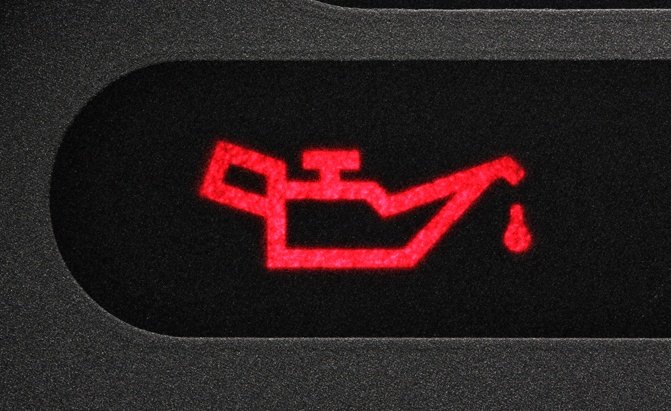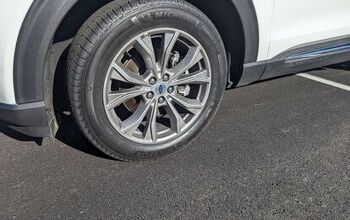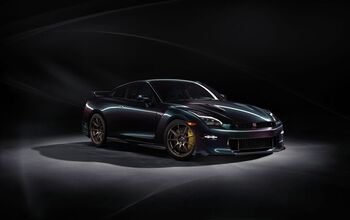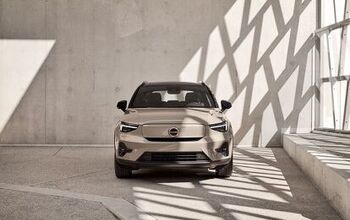3 Warning Lights That Mean 'Stop Driving RIGHT NOW'

Technician Paul Kennaley witnesses something frightening almost every week: customers who ignore warning lights in their vehicle instrument cluster but fail to take proper (if any) action. Frequently, this results in expensive problems.
“These lights are there for a reason,” Kennaley says. “Most drivers notice them when they appear and act on them right away. The CHECK ENGINE light is probably the most common, and most drivers seem to understand the importance of at least checking to see what the light means, and they take action from there.”
But Kennaley says there’s an increasing number of drivers who don’t notice the warning lights or notice them but choose to ignore them.
“We had one customer come in with a completely wrecked engine because they thought the oil pressure warning light meant it was time for an oil change,” he says. “So, this customer kept driving until the engine was destroyed a short time later.”
ALSO SEE: What Does That Light on My Dash Mean?
Guessing why a warning light has appeared in your instrument cluster is an unwise idea and ignoring that light can be even worse. Ditto trying to fix what you figure the problem is without knowing how.
“Another customer came in with a central head-unit touchscreen display that had fried by a power spike caused when they continually unplugged and reconnected the battery trying to make a CHECK ENGINE light go away,” Kennaley adds.
Here are a few common warning lights, why they might appear, and what can happen if you don’t take the correct action right away. Each of the warning lights highlighted below requires your attention immediately, but that instructions in your vehicle owner’s manual take priority over the general tips listed below.
Warning Light: OIL PRESSURE
Why It’s On: The oil pressure warning light typically appears for a second or two when you start your vehicle’s engine, and then it disappears. Outside of this situation, this warning is activated when an engine sensor detects that oil pressure has fallen below a safe limit, possibly because of an oil leak, oil consumption, or a dying or dead oil pump. This is an urgent warning that requires immediate corrective action since oil isn’t flowing properly through the engine.
What You Should Do: Pull over as quickly and safely as possible, turn the engine off, and check your owner’s manual for further instructions. You may be able to add engine oil and continue driving with extreme caution, but you’ll probably have to get the vehicle towed to the shop. All vehicles vary, but the correct steps are outlined in your owner’s manual.
What Happens if you Ignore It: Have you ever tossed a thick and meaty stack of $50 bills into a paper shredder? Driving a vehicle with an engine oil warning amounts to the same thing. Without sufficient oil pressure, high-precision parts in your engine wear rapidly, sieze, break, and fail. In many situations, even a few moments of driving with low oil pressure will turn your engine into a boat-anchor. When you see an oil pressure warning light, immediate action is required to avert total disaster.
Warning Light: ENGINE OVERHEAT / ENGINE COOLANT
Why It’s On: A red thermometer graphic, possibly accompanied by a coolant gauge that’s reading at or near its red zone, means that the temperature of your engine coolant has exceeded safe limits and that your engine is overheating. This could be caused by a coolant leak, an air bubble in the cooling system, or a failing or failed coolant pump. Take this warning as an urgent one, understanding that your engine is at risk of extreme damage and that corrective action is required right now.
What You Should Do: Safely exit the roadway and pull over as quickly as possible. Then let the engine idle with the cabin heat and fan speed cranked to full blast, which can help cool the engine. Do not turn the engine off immediately, but be prepared to. Your owner’s manual has further instructions on what to do here.
Typically, if signs of coolant leakage are detected, the engine should be turned off right away. These include a sweet burned sugar smell, steam or vapor pouring out from under the hood, or a visible leak of hot fluid beneath the vehicle. If any of these signs are present, the best course of action is typically to shut the engine off. If not, let the engine idle with the heat cranked a few moments to cool it down, then turn it off.
You may be able to add more coolant and continue driving, but the best course of action is often to have the vehicle towed to a shop for repair.
What Happens if you Ignore It: Keep driving with an overheating engine and major internal components will likely suffer extreme damage very quickly. Warped cylinder heads are likely, which result in expensive repairs or the need to totally replace the vehicle’s engine. Head gasket damage is also likely, as is a failure of coolant hoses, associated coolant plumbing, and the coolant pump itself. Follow all instructions in your owner’s manual, noting that towing the vehicle to a shop for proper repair is considerably cheaper than replacing an engine.
ALSO SEE: Top 10 Reasons Why Your Check Engine Light is On
Warning Light: BRAKES
Why It’s On: Unlike oil and overheat warnings that typically illuminate for a specific reason, there are several reasons a BRAKE warning light may appear in your cluster. These reasons range from a burned-out brake light bulb or a bad switch to total loss of vehicle braking capability.
What You Should Do: If the BRAKE warning light appears while driving, assume you have no brakes, activate hazard lights, and find the safest and quickest way off of the road. Then, consult the owner’s manual for specific instructions.
Once you’re safely stationary, check the brake fluid level. Instructions are outlined in the owner’s manual. Do NOT continue driving if the brake fluid level is low. If it seems satisfactory, the problem may be elsewhere in the system — possibly related to a bad ABS sensor or a problem with the brake light wiring.
Since stopping isn’t optional, drivers are advised to use the highest level of caution and judgment before continuing to drive a vehicle with a BRAKE warning light and to have the vehicle inspected by a professional as soon as possible. After consulting your owner’s manual, if you’re in any doubt whatsoever as to why the light is on, have the vehicle towed to a shop to be assessed. This is much less expensive than a car crash.

Justin Pritchard, an award-winning automotive journalist based in Sudbury, Ontario, is known for his comprehensive automotive reviews and discoveries. As a presenter, photographer, videographer, and technical writer, Justin shares his insights weekly through various Canadian television programs, print, and online publications. In 2023, Justin celebrated a significant milestone, airing the 600th episode of his TV program, AutoPilot. Currently, he contributes to autoTRADER.ca, Sharp Magazine, and MoneySense Magazine. His work as a technical writer, videographer, presenter, and producer has been recognized with numerous awards, including the 2019 AJAC Video Journalism Award and the 2018 AJAC Journalist of the Year. Justin holds a Bachelor of Commerce (Hons) from Laurentian University, which he earned in 2005. His career in automotive journalism began that same year at Auto123.com. Since then, he has written one of the largest collections of used car buyer guides on the internet. His passion for photography, nurtured from a young age, is evident in his work, capturing the scenic beauty of Northern Ontario. Living in a region with a particularly harsh winter climate has made Justin an expert on winter driving, winter tires, and extreme-weather safety. Justin’s significant achievements include: 2019 AJAC Video Journalism Award (Winner) 2019 AJAC Road Safety Journalism Award (Runner-Up) 2019 AJAC Automotive Writing (vehicle review topics) (Winner) 2019 AJAC Automotive Writing (technical topics) (Winner) 2018 AJAC Journalist of the Year You can follow Justin’s work on Instagram @mr2pritch and YouTube @JustinPritchard.
More by Justin Pritchard



































Comments
Join the conversation
I had paid so much money to have my car workable and that I was ripped if money to keep up either the garage nor fixing the breaking fluid to the Frankie to the breaking fruit to the pulley belt to the breaking fluid to the burning rubber that smoked and still the warning break light came on I had no money to full fill their next quote that was of corrosion costied at 1100.That this was Stiff for sure.I sold it as scrap.it should have been OK for 3 years more,,no doubt it is perfect now I sold it